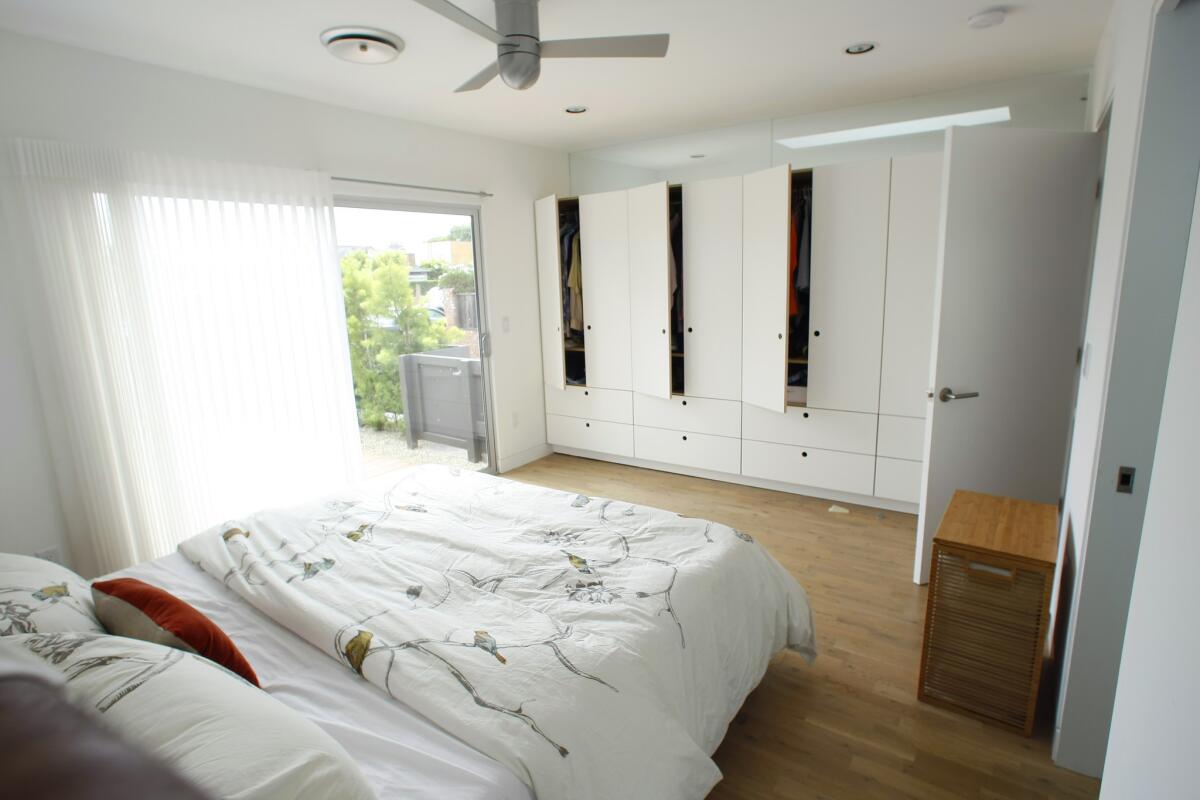Door closing on closets? Why wardrobes are replacing walk-ins

Think of it as the closetless closet, or perhaps the closet turned inside out. Just as kitchens have opened up to become free-flowing spaces connecting to dining areas and family rooms, so too are closets losing their doors â and in many cases, their walls.
When Robert Sweet remodeled Joe Borstâs Marina del Rey house [full article and photo gallery], he eliminated formal closets in favor of built-in wardrobes and storage units lining the master bedroom wall and entryway.
Ginny Snook Scott, vice president at California Closets, sees the trend as the American home comes full circle. In the 1920s, she said, closets with doors increasingly replaced armoires. In the 1950s, larger closets with sliding doors spread across suburbia. The love affair with the walk-in closet began in the 1980s, and by the 1990s, his-and-hers walk-ins were not uncommon. By the early 2000s, closets in larger homes had reached the size of small bedrooms â or actually were converted bedrooms.
And now? Wardrobes and storage units are essentially larger, modern takes on the armoire. Among the primary drivers of the trend: consumer desire for fully open floor plans, improvements in cabinetry quality and more competitive pricing.
Scott added that because the depressed real estate market has left so many homeowners stuck in older, smaller homes, demand is spiking for affordable ways to create storage â and to better appreciate what we already own. She cited a client who, after splurging for shoes, didnât want them stored behind closet doors.
âFor her, a $500 pair of shoes was a piece of artwork,â Scott said. âShe only wears them for special occasions â maybe twice a year â and having them out allows her to see and appreciate them other times.â
Track L.A. at Home via Facebook, Twitter and Pinterest.
More to Read
Inside the business of entertainment
The Wide Shot brings you news, analysis and insights on everything from streaming wars to production â and what it all means for the future.
You may occasionally receive promotional content from the Los Angeles Times.










